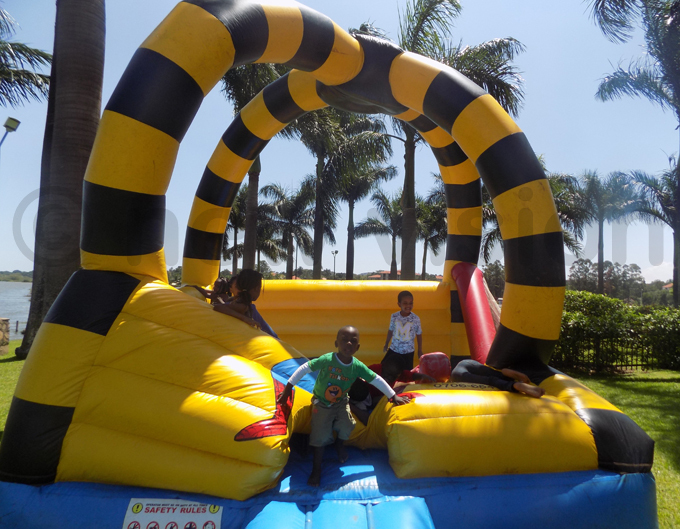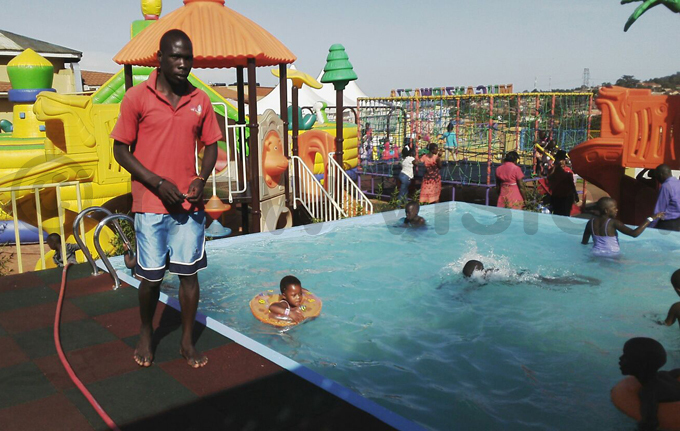Why children need a safe environment at school
Children are adventurous and have a burning desire to experiment with their physical abilities
We often hear of children having experienced common accidents in schools.
Imagine how distressful it can be sending your healthy child to school only to receive a call from the administrators informing you of a severe injury they have sustained which can be a burn or even a sharp object.
It could also be as serious as having a foreign object dropped in their nose or ear by their peers while playing or accidents while swinging.
George William Kawooya, the principal of Kheaza Day Care, Nursery and Primary School, says just like at home, children are prone to several accidents while at school, when they swallow coins and beads, falls and drowning, getting burns and many more.
Despite children being cautioned about possible accidents by school administrators, accidents still happen since children are adventurous and have a burning desire to experiment with their physical abilities.
"We continuously craft accident precautions, especially for those (accidents) that we foresee, like filling the swing playground with sand to minimize the damages from falls and placing rough pavers on the walkway ground to do away with the slippery ground that makes children prone to falls," Henry Kaddu, the principal of Mbogo Grammar Nursery and Primary School, says.
"With such precautions, damages experienced by children from accidents are minimized," he adds.
Paul Nyende, a counsellor and lecturer of psychology at Makerere University, says it's at the childhood stage that people become very active and playful.
 Children playing on a bouncing castle. Photos by Jacquiline Nakandi
Children playing on a bouncing castle. Photos by Jacquiline Nakandi
"It's at the childhood stage that one becomes very curious and wants to try out new activities, making them more liable to accidents, like slips, cuts and falls," he adds.
The chances for occurrence of accidents become more real when the teachers and administrators are distracted, when the equipment is faulty or there is a lack of understanding of safety procedures.
Accidents can be minimized if children understand the information disposed to them, through safety sensitization programmes, prohibiting dangerous equipment like the sharp materials on the school premises and keeping playgrounds safe.
"The safety of playgrounds can be upgraded by repairing dilapidated swings, filling the ground with sand, hanging safety prescription posters in the area and employing guides to monitor the children while they play," Nyende says.
Other than playgrounds, pits like septic tanks, swimming pools and many more are other risky elements that pose accident possibilities. Vincent Karuhanga, a doctor at the Friends Poly Clinic in Kampala, says accidents from such pits are potential causes of bruises, fractures, sprains, broken bones and death due to drowning.
Some schools might have mastered the art of preventing possible accidents from pits, but that doesn't rule out their (accidents) likelihood in others (schools) that have not yet addressed the problem.
According to Kaddu, dangerous pits should be sealed off to avoid possible accidents.
"We also inform our pupils about their (dangerous pits) existence and the possible outcomes in case one fell into it" Kaddu says.
He continues to say that he doesn't plan on building a swimming pool in his school because of the risks it poses. Pupils at Mbogo Grammar School are instead taken out twice a week for swimming at the Makerere University swimming pool, where they are monitored for their safety.

"Swimming pool guides should also be employed to patrol the pools all the time to prevent possible drowning and to rescue victims in time, if any," Nyende advises.
Hot substances like food and sharp materials like razorblades, pen covers and hard sharpened pencils are other risky objects for children.
Children are also sensitized about the dangers of playing with sharp object.
"We give children objects like sharpeners to replace the dangerous sharp objects they may need at school. They, for instance, need razorblades for sharpening their pencils, but we condemn their (razorblades) use and instead provide sharpeners that are safe, yet play the same role," Kawooya adds.
Schools also restrict easy access to anything hot that may burn a child.
Kawooya says such substances are restricted to the dining area, where there is supervision by administrators.
"Even in the dining area, the temperature of the foods and drinks given to the children is minded so that it does not burn them when served or in case of an accident," he adds.
Nyende, adds that children and administrators should also be trained on how to give first aid to save the lives of accident victims in schools.